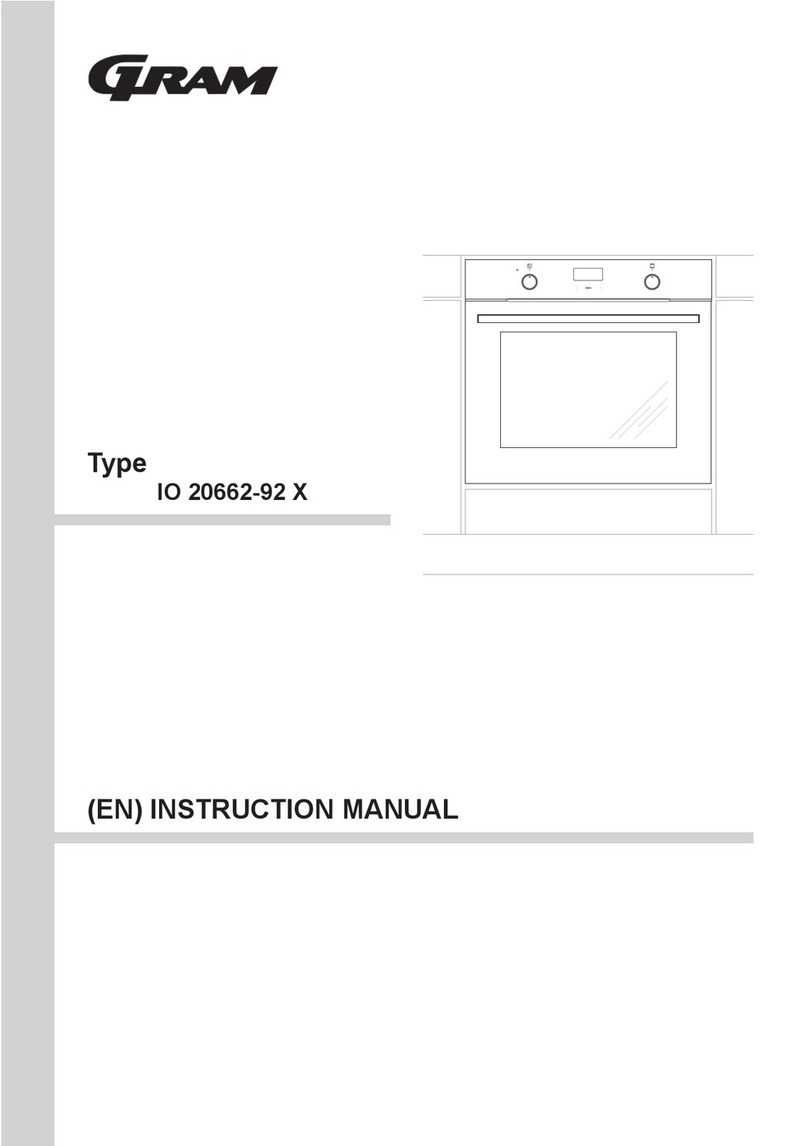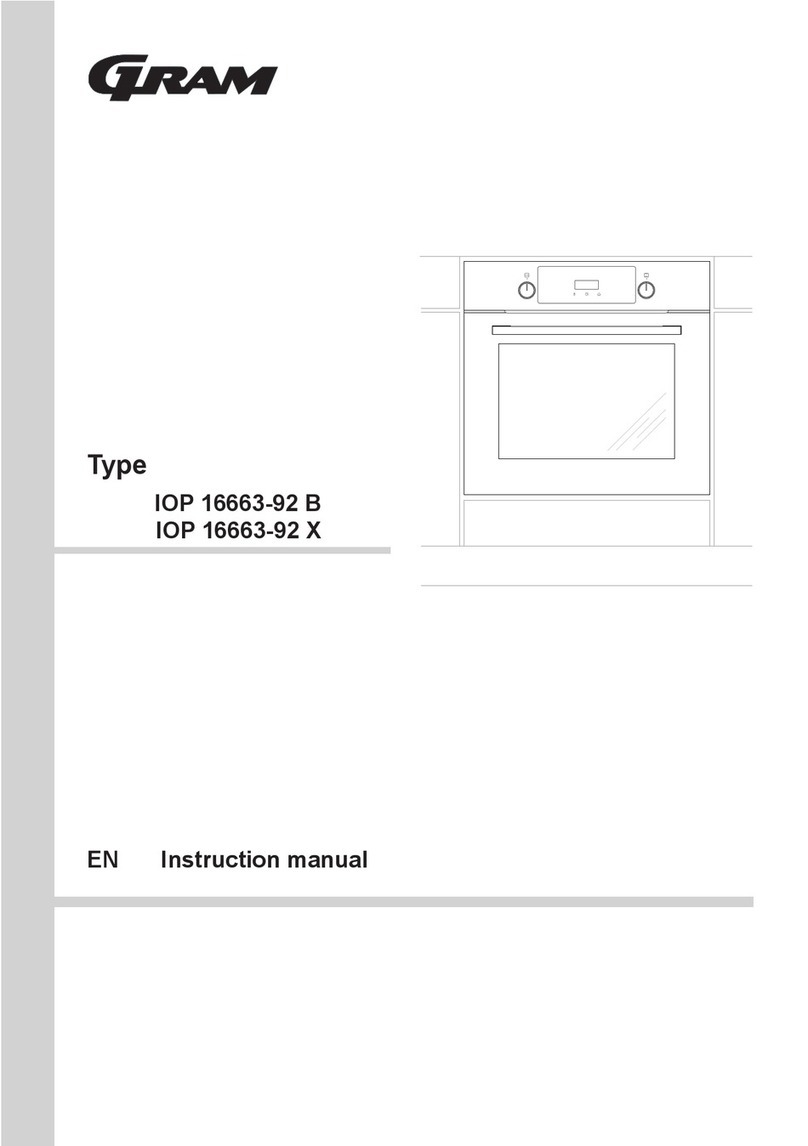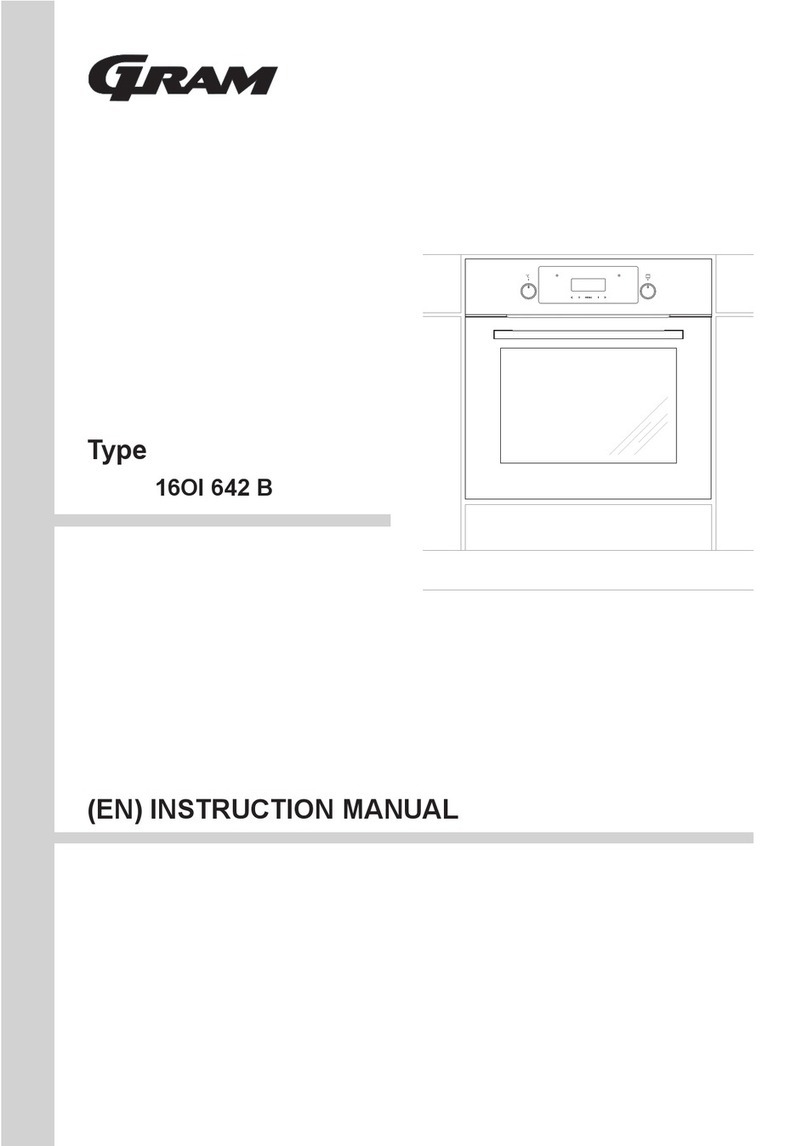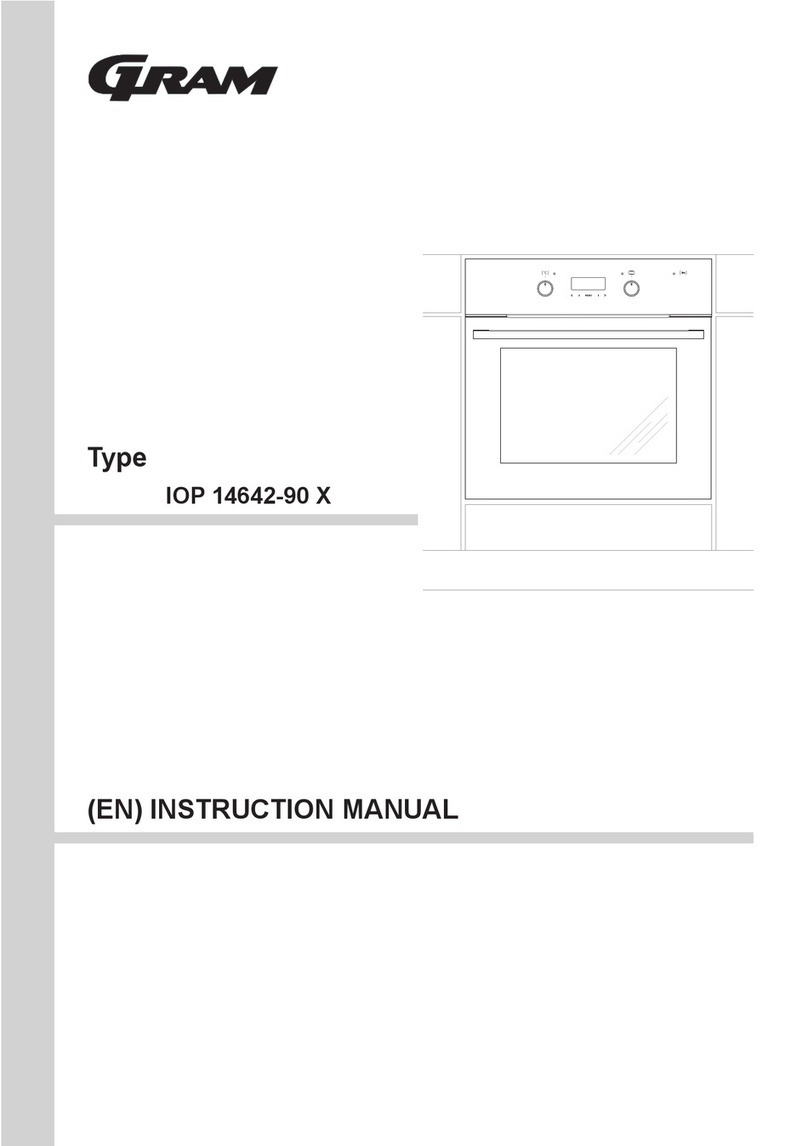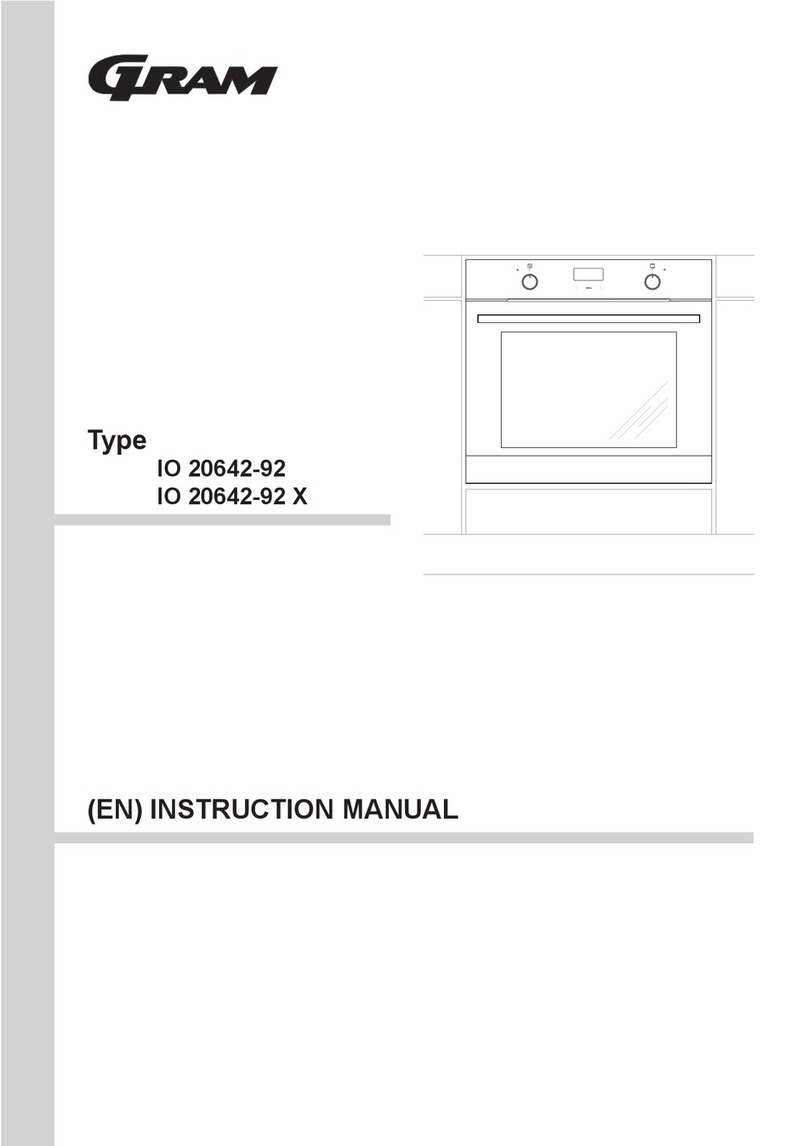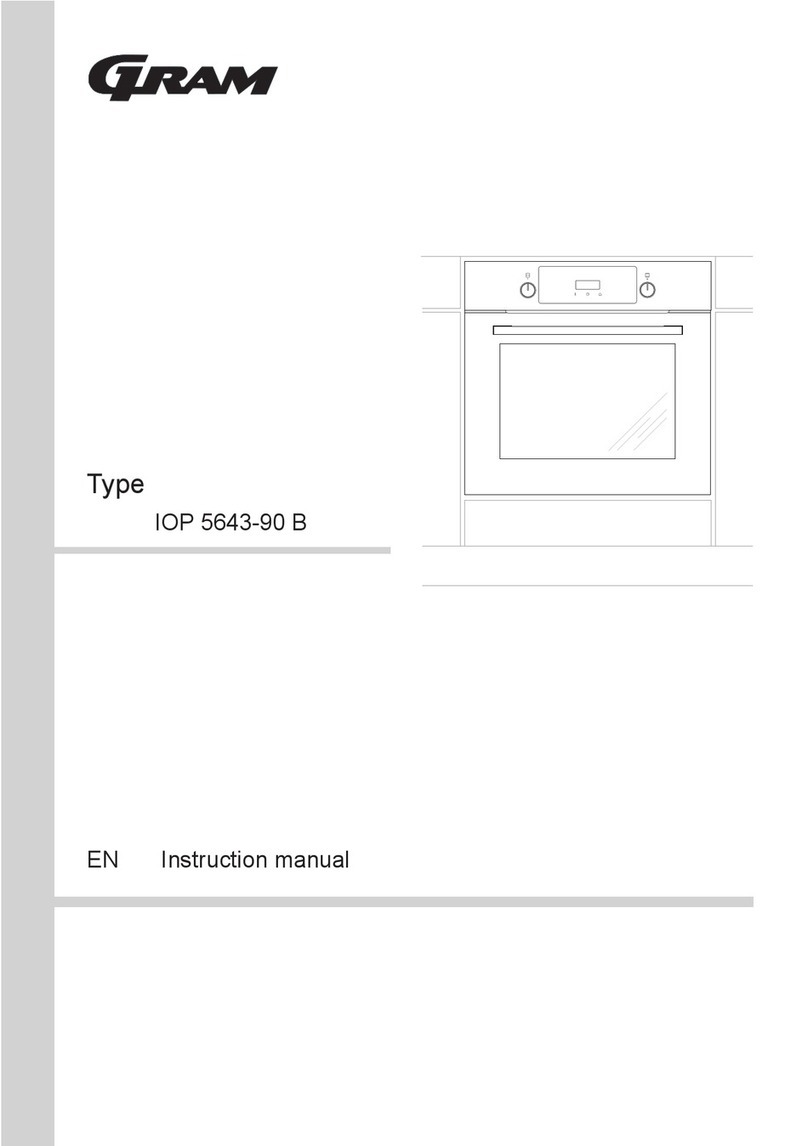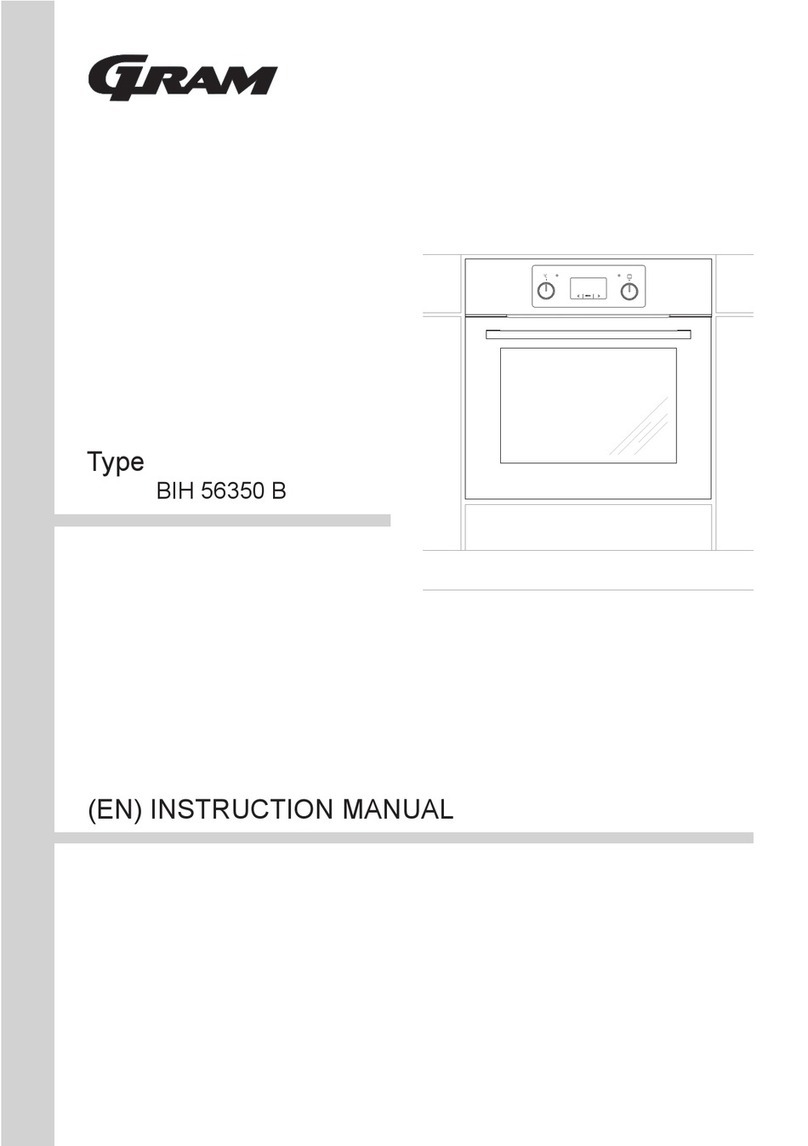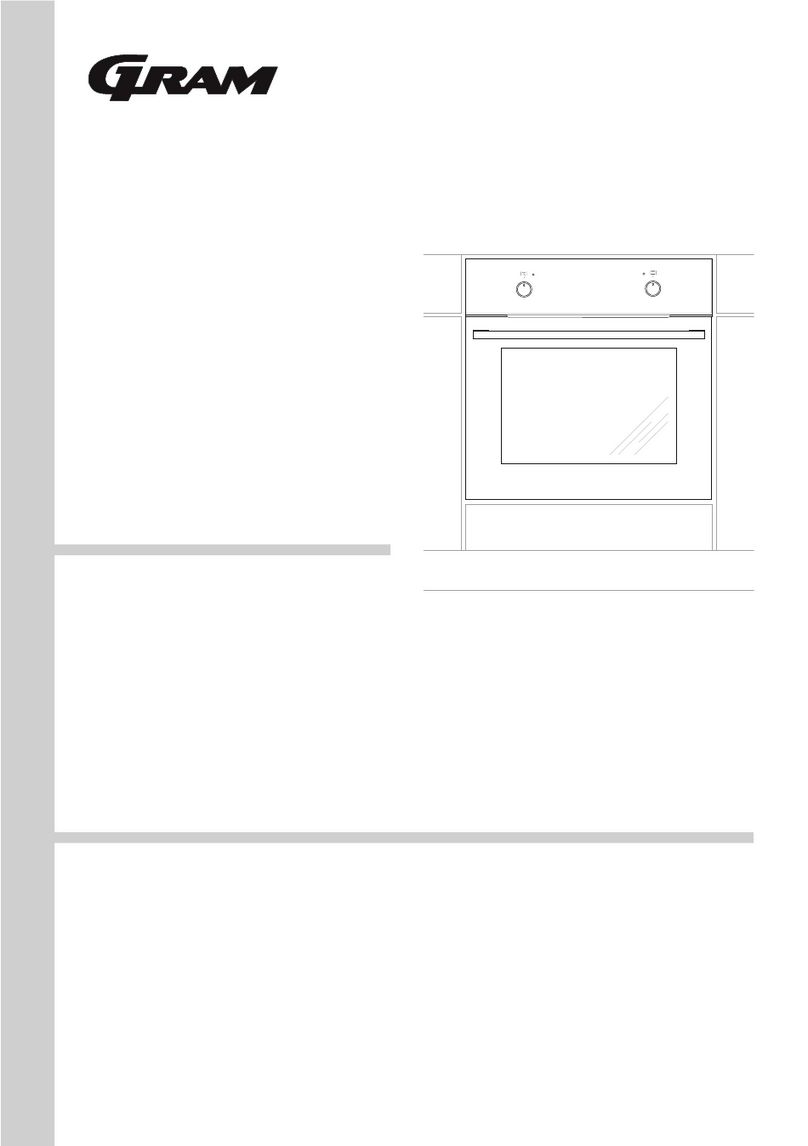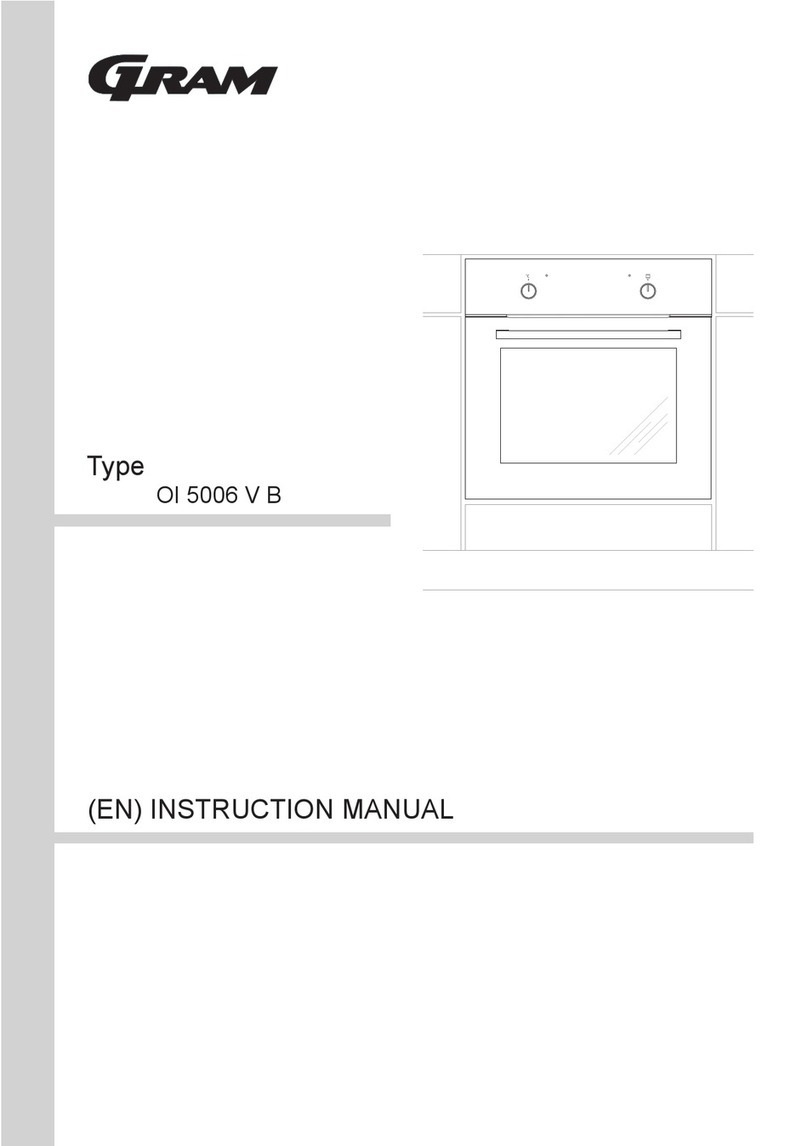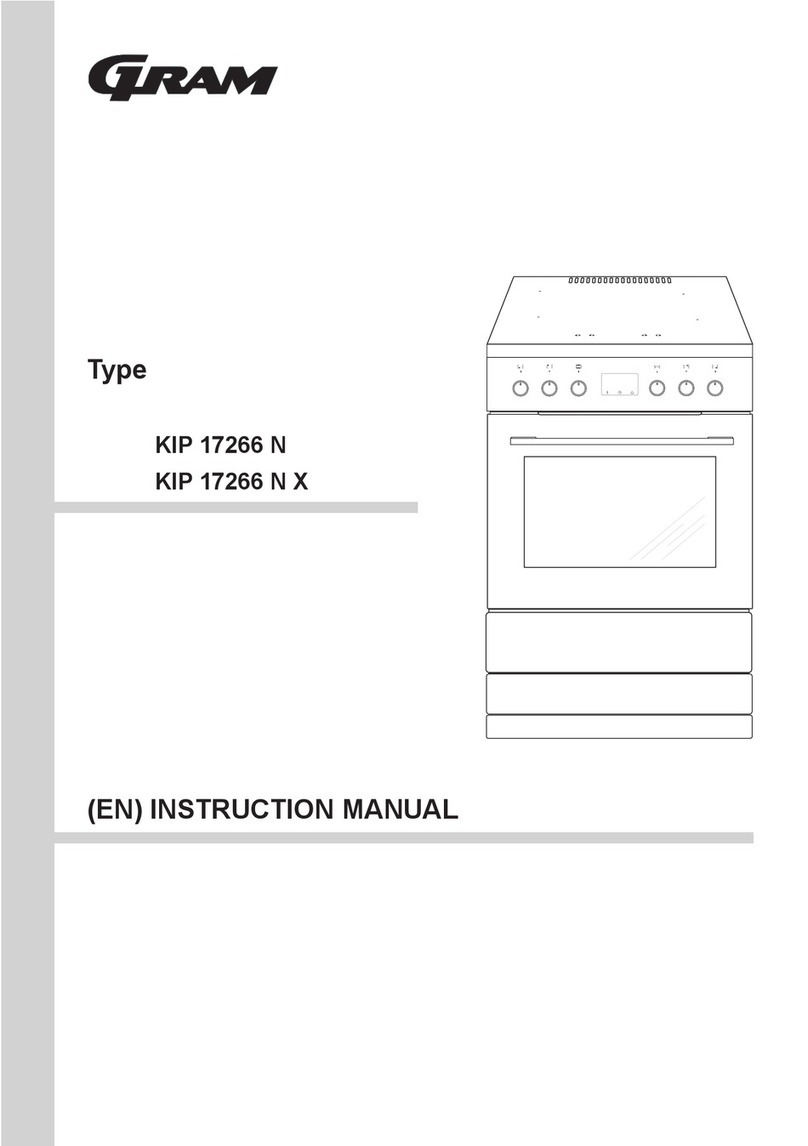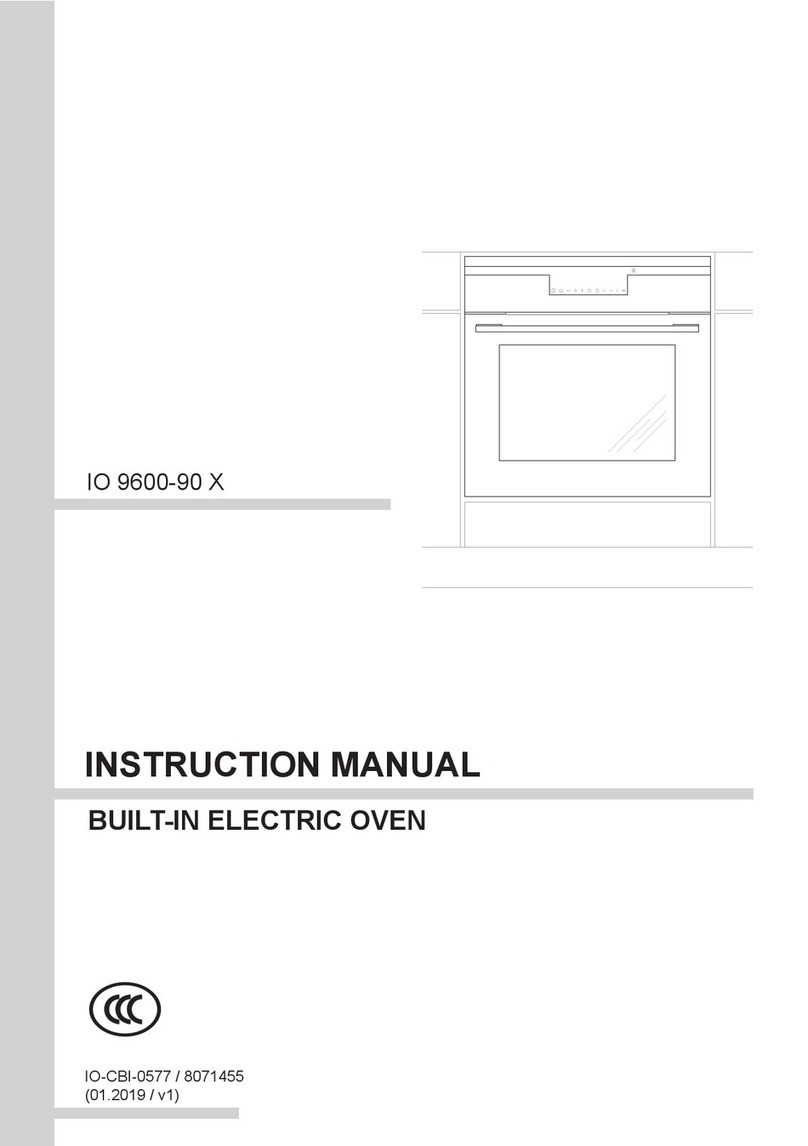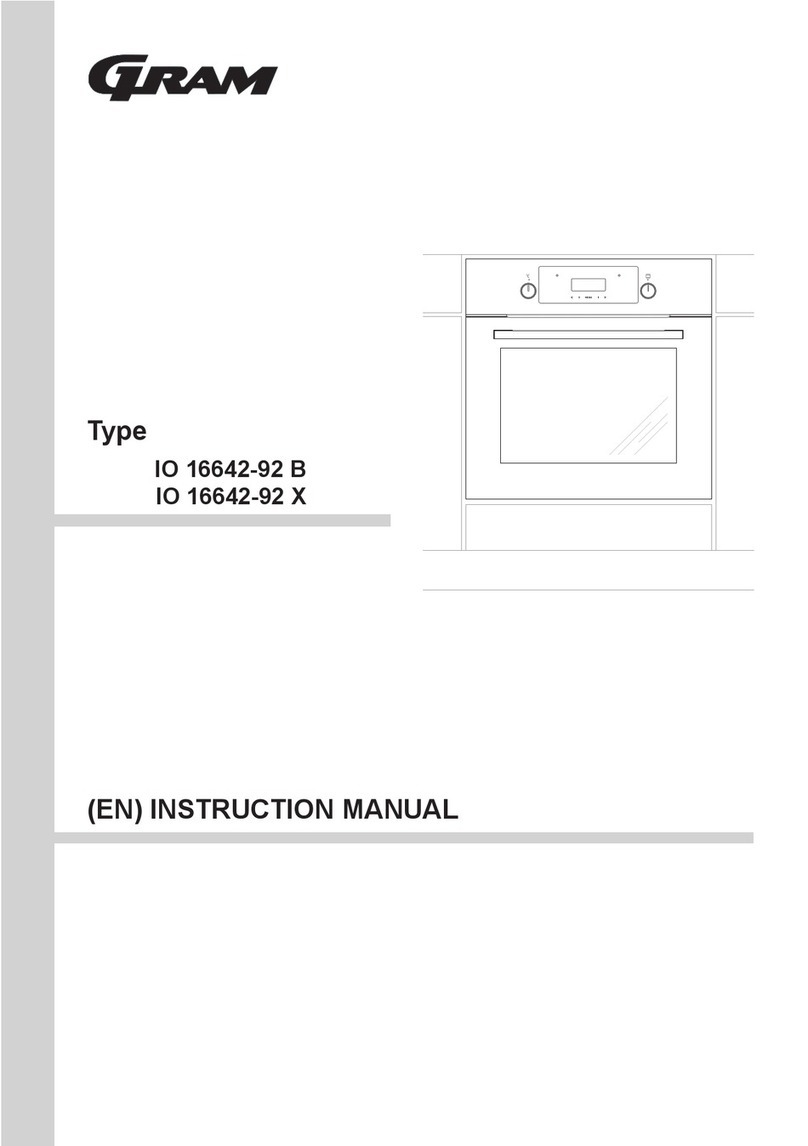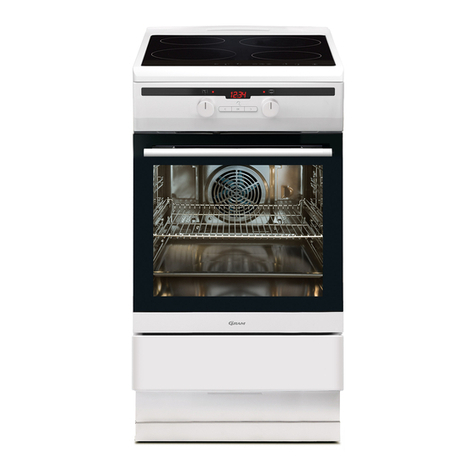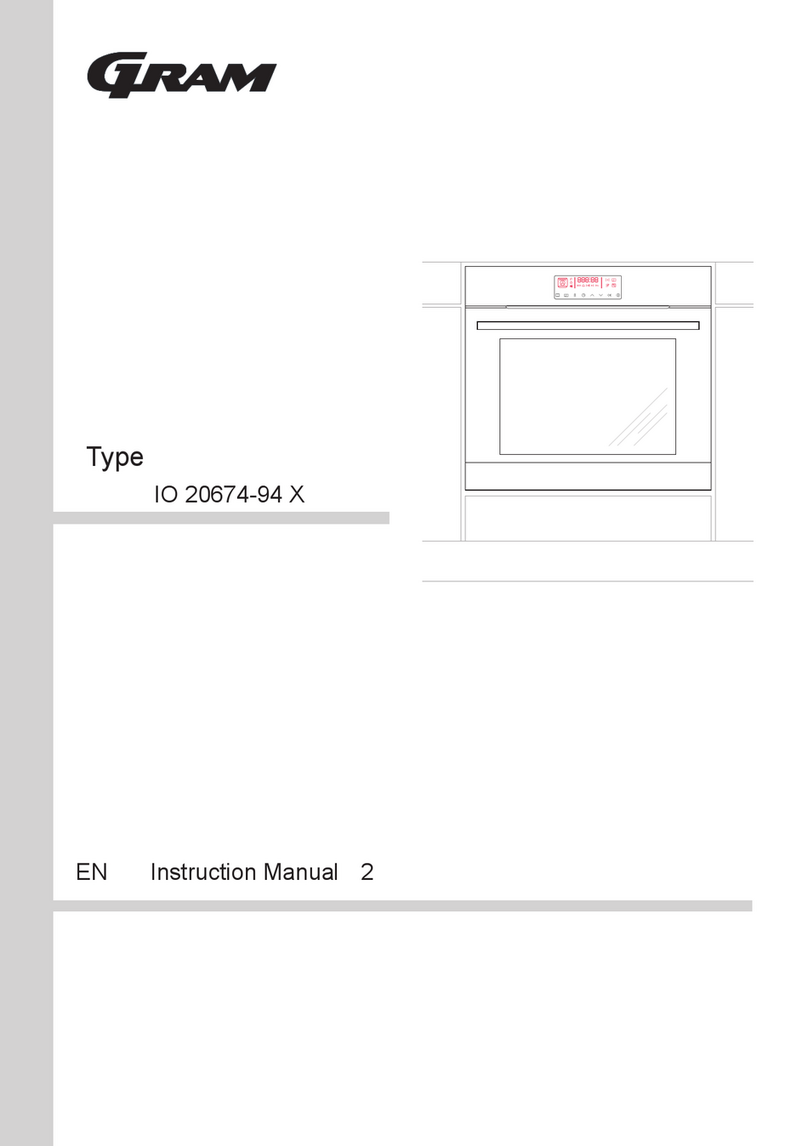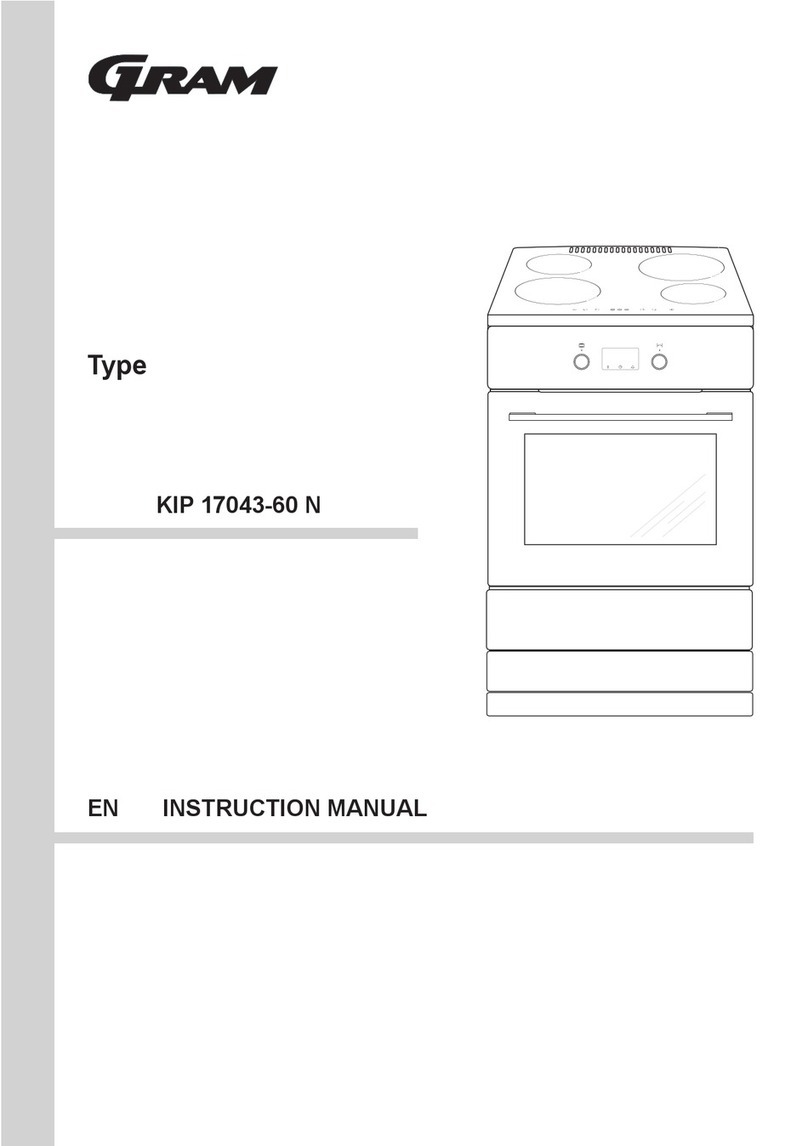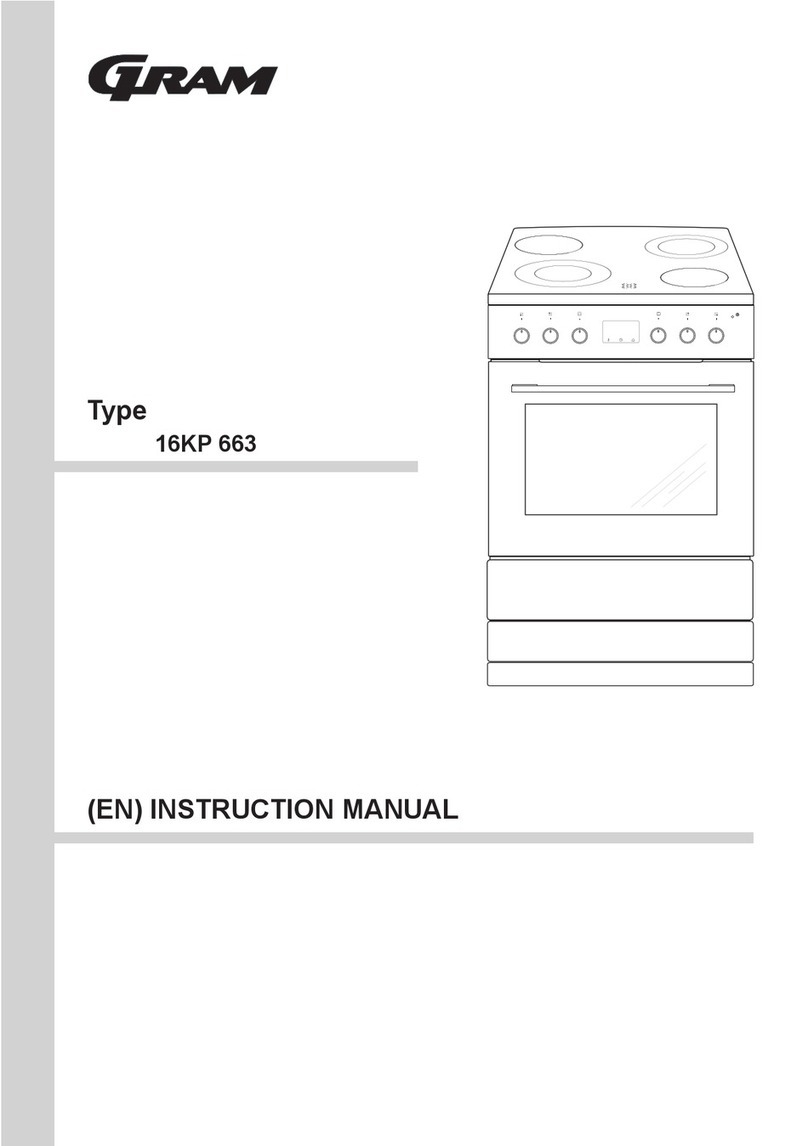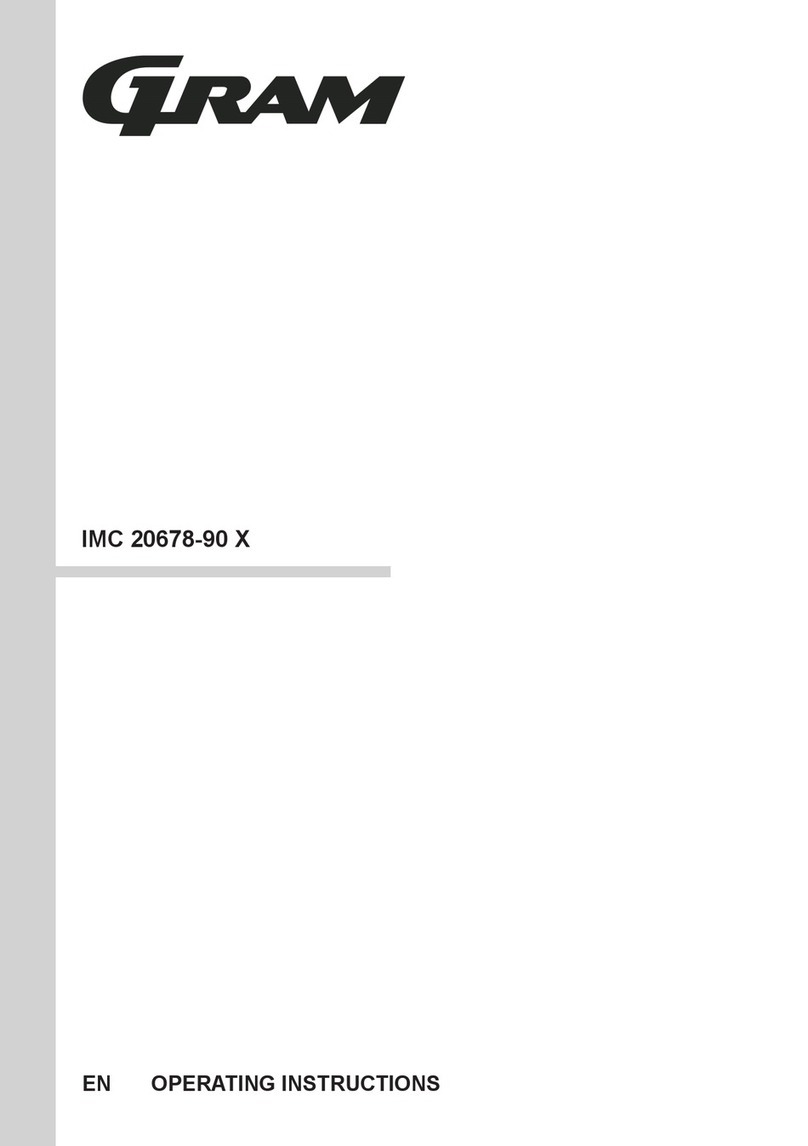
6
SAFETY INSTRUCTIONS
Always keep children away from the cooker.
While in operation direct contact with the cooker may cause burns!
Ensure that small items of household equipment, including connection leads, do not touch
the hot oven or the hob as the insulation material of this equipment is usually not resistant
to high temperatures.
Do not leave the cooker unattended when frying. Oils and fats may catch re due to
overheating or boiling over.
Do not allow the hob to get soiled and prevent liquids from boiling over onto the surface
of the hob. This refers in particular to sugar which can react with the ceramic hob and
cause irreversible damage. Any spillages should be cleaned up as they happen.
Do not place pans with a wet bottom on the warmed up heating zones as this can cause
irreversible changes to the hob (irremovable stains).
Use pans that are specied by the manufacturer as designed for use with a ceramic
hob.
If any defects, deep scratches, cracks or chips appear on the ceramic hob, stop using the
cooker immediately and contact the service centre.
Do not switch on the hob until a pan has been placed on it.
Do not use pans with sharp edges that may cause damage to the ceramic hob.
Do not look directly at the halogen heating zones (not covered by a pan) when they are
warming up.
Do not put pans weighing over 15 kg on the opened door of the oven and pans over 25
kg on the hob.
Do not use harsh cleaning agents or sharp metal objects to clean the door as they can
scratch the surface, which could then result in the glass cracking.
Do not use the cooker in the event of a technical fault. Any faults must be xed by an
appropriately qualied and authorised person.
In the event of any incident caused by a technical fault, disconnect the power and report
the fault to the service centre to be repaired.
Never allow children to remain unattended near the cooktop nor to play with the control
panel.
People with life function support implants (such as a heart pacemaker, an insulin
pump, or a hearing aid) must make sure that the operation of these devices is not
disturbed by the induction plate (induction plate frequency range is 20 to 50 kHz).
The appliance has been designed only for cooking. Any other use (for example for heat-
ing) does not comply with its operating prole and may cause danger.

